The Journey (1959 film)
7.2 /10 1 Votes
Duration Country United States | 7/10 IMDb Genre Drama, History, Romance Language English | |||||||||||||||||||||||||||||||||
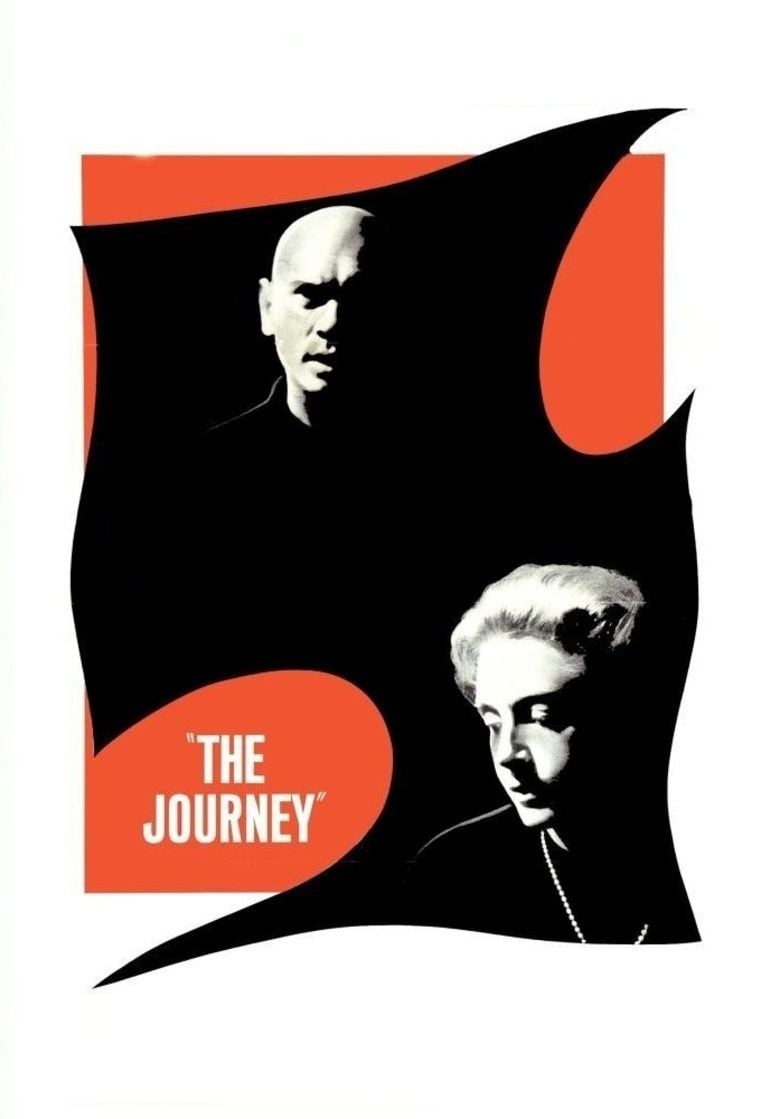 | ||||||||||||||||||||||||||||||||||
Release date February 19, 1959 Cast (Diana Ashmore), (Major Surov), (Paul Kedes (as Jason Robards Jr.)), (Hugh Deverill), (Margie Rhinelander), (Billy Rhinelander (as Ronny Howard)) Similar movies Salt , Bridge of Spies , The Good Shepherd , Underworld , Independence Day , The Usual Suspects | ||||||||||||||||||||||||||||||||||
Breathing space a tribute to the journey 1959
The Journey is a 1959 American drama film directed by Anatole Litvak. A group of Westerners tries to flee Hungary after the Soviet Union moves to crush the Hungarian Revolution of 1956. It stars Deborah Kerr, Yul Brynner, Jason Robards and Robert Morley. Deborah Kerr and Yul Brynner were paired again since they starred in The King and I in 1956, where he had an Oscar-winning performance. The Journey was shot in Metrocolor.
Contents
- Breathing space a tribute to the journey 1959
- Yul brynner speaking russian in the journey 1959
- Plot
- Cast
- Deborah Kerr and Yul Brynners Relationship in The Journey
- Box office
- References
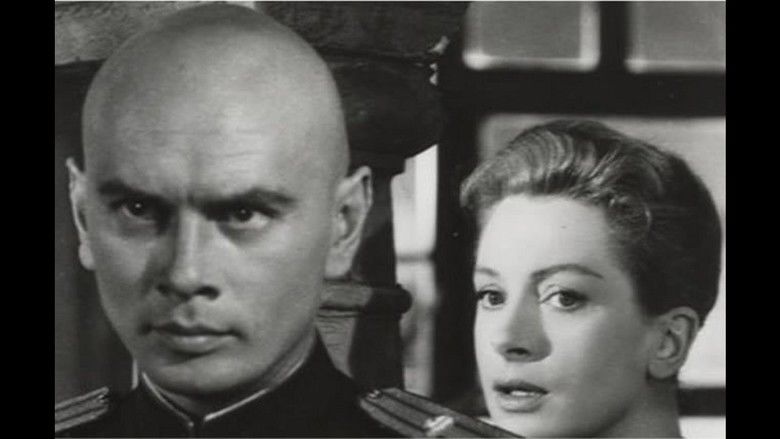
Yul brynner speaking russian in the journey 1959
Plot
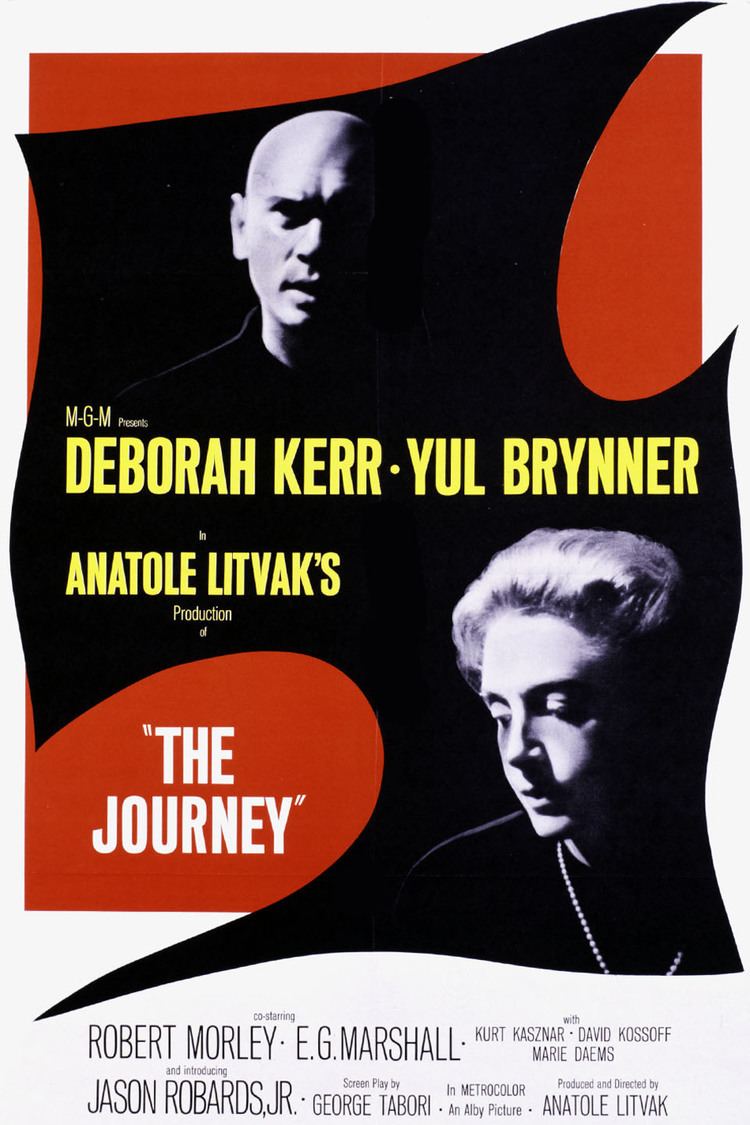
In 1956 a group of passengers stranded for days at Budapest airport by the Hungarian uprising are taken in a bus towards the frontier with neutral Austria. A sick man in the back seat, who claims to be an Englishman called Flemyng, seems to be known to an aristocratic Englishwoman in the front seat called Lady Ashmore. The journey is difficult with diversions and roadblocks, some manned by Soviet troops and some by Hungarian insurgents. At a little town near the border, the passengers are taken off the bus by Major Surov, the local Russian commander. After questioning them and impounding their passports, he orders them to remain in the only hotel. He suspects that the passport of Flemyng, whose condition is worsening, is not genuine and he has also developed a strong interest in the attractive Lady Ashmore.
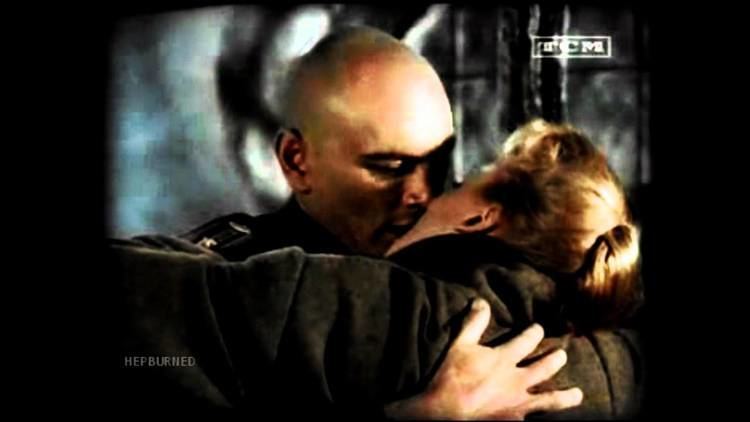
It emerges that Flemyng is in fact a Hungarian insurgent whom Lady Ashmore, his lover, is trying to smuggle to safety. Surov deduces both facts but does not act, hoping that Lady Ashmore will offer herself to him in exchange for a passage across the frontier. Speaking good English, he uses the passengers trapped in the hotel as a sounding board for his views, arguing that Russians are human too and questioning the wisdom of imposing Marxism by military force. However, with Flemyng getting weaker from what is revealed to be an untreated gunshot wound, Lady Ashmore bribes a fisherman to take the two of them across the lake to Austria by night. Surov deduces what is happening and captures them both. Getting Flemyng treated by an army doctor, he sends Lady Ashmore back to the hotel. The other passengers are furious that she has jeopardised their release by her selfish behaviour and an American woman tells her very frankly what she can do to save them all.
Sniping by Hungarians has been keeping the Russian garrison on edge and a shot wounds Surov's beloved black horse. As he is ordering a sergeant to kill the stricken animal, Lady Ashmore turns up to do her duty. In deep sorrow, he asks if she comes of her own free will. When she truthfully says no, he lets her go. In the morning he orders the bus to take the passengers, minus the arrested Flemyng, to a quiet spot where they can walk into Austria. As they begin to do so, Surov turns up with Flemyng and hands him to Lady Ashmore. Watching the two disappear, a Hungarian bullet kills him.
Cast
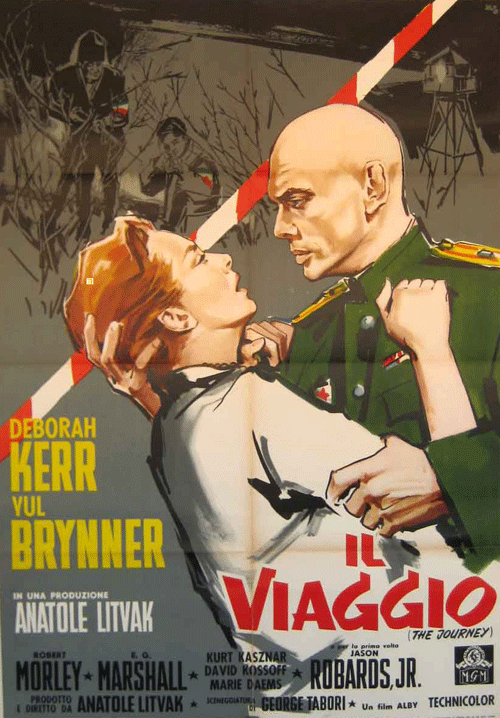
Deborah Kerr and Yul Brynner's Relationship in The Journey
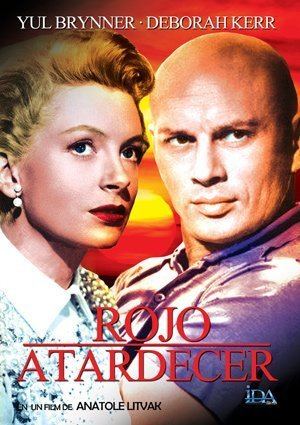
“The Journey” was made in Vienna in March–June 1958, a period when there were rumors that there was a love affair between them. But Deborah Kerr ended the whole gossip by marrying for the second time. Peter Viertel, who was a talented playwright and also one of the screenwriters for “The Journey”, became her husband in 1960, and Yul Brynner was one of the witnesses. The relationship between Kerr and Brynner was described by their close friends as “sister and brother” or “equal to equal”, even if Kerr herself admitted that she was very much attracted by Brynner’s magnetism and piercing eyes. They trusted each other and they used to visit one another while they both lived in Switzerland in the 1960s.
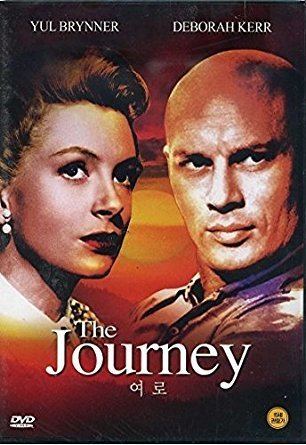
This film was Jason Robards's screen debut.
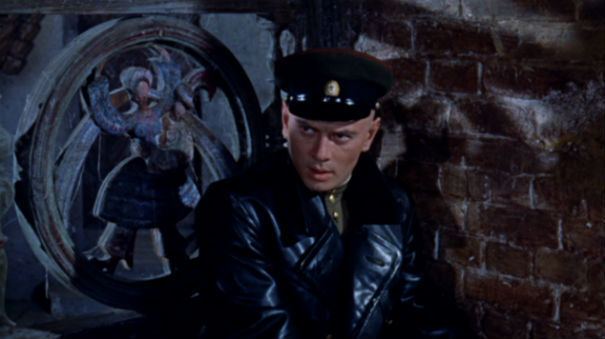
Ron Howard had appeared in an unbilled part in the 1956 film Frontier Woman, but The Journey marked his first credited appearance; he was billed as Ronny Howard.
Box office
According to MGM records the film earned $1,300,000 in the US and Canada and $2,150,000 elsewhere resulting in a loss of $905,000.
References
The Journey (1959 film) WikipediaThe Journey (1959 film) IMDb The Journey (1959 film) themoviedb.org
